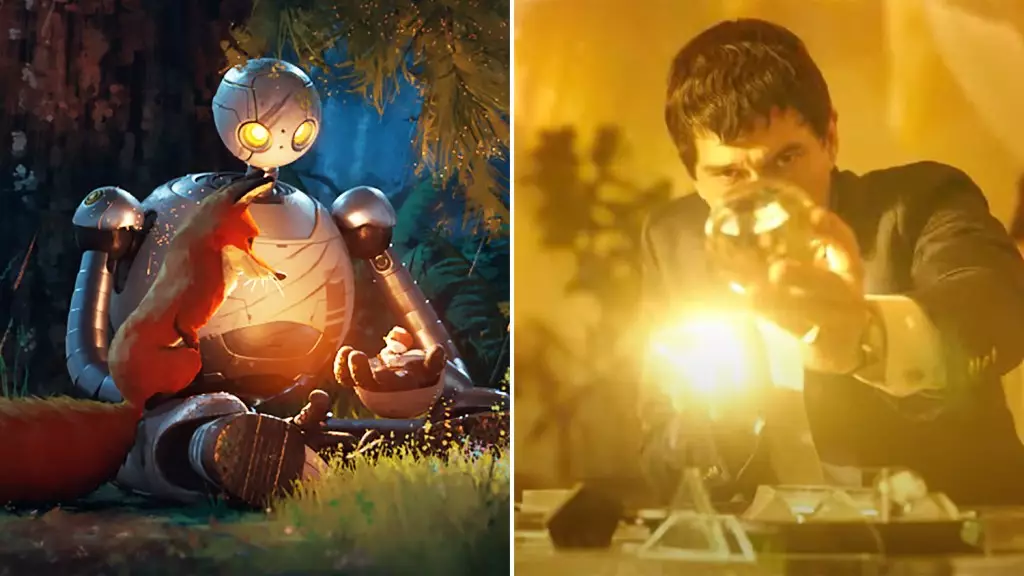The movie industry is witnessing an influx of family-centric films this weekend, a trend that appears to be a strategic move by studios to cater to audiences during a time when such offerings have garnered substantial attention. With the release of DreamWorks Animation’s latest endeavor, *The Wild Robot*, based on Peter Brown’s New York Times bestseller, the market seems poised for a competitive weekend. However, a distinct demographic focus sets *The Wild Robot* apart from its recent predecessor, Paramount/Hasbro’s *Transformers One*.
The Market Dynamics of Family Films
Opening at approximately 3,900 theaters, *The Wild Robot* is projected to accrue about $20 million, placing it comfortably within the realm of typical animated films released in September. When compared to the recent performance of *Transformers One*, which opened at $24.6 million, it appears that *The Wild Robot* may not replicate that immediate financial success; however, the discrepancy in their target audiences—and ultimately, their appeal—merits discussion.
Fan reaction and wholesome stories often draw in families, especially when targeting younger audiences, allowing for a different kind of success than action-driven franchises. Additionally, while *The Wild Robot* is a fresh concept in animation, original films often encounter a more challenging market introduction compared to established cartoon classics.
Notably, *The Wild Robot* will dominate premium viewing options, including access to 380 IMAX screens—a significant advantage that could amplify audience interest and viewing experiences. On the flip side, *Megalopolis*, directed by cinematic icon Francis Ford Coppola, opens later and will occupy about 200 IMAX evenings across key urban areas. Here, dynamics shift towards a more niche audience preoccupied with mature themes and complex narratives.
In the competitive landscape of theatrical releases, major studios like Universal are positioning *The Wild Robot* as a serious Oscar contender. This effort involves more than marketing; it embodies strategic promotional methods, including engaging presences at events like CinemaCon and Comic-Con. The use of a life-sized robot, voiced by Oscar-winning actress Lupita Nyong’o, who plays the titular character Roz, serves not only as a marketing gimmick but also solidifies the film’s family-oriented roots.
Recent festival performances have also contributed to building anticipation around *The Wild Robot*. The world premiere at the Toronto International Film Festival yielded a nearly unprecedented 98% satisfaction rating from critics on Rotten Tomatoes—a crucial metric for drawing an audience amidst the glut of cinematic options. Premises featuring a shipwrecked robotic protagonist fostering connections with island animals create a compelling narrative about love, resilience, and adaptation—a foundation likely to resonate with family viewers.
The film’s creative team plays a significant role in its potential acclaim as well. Helmed by Chris Sanders—renowned for his work on animated masterpieces like *How to Train Your Dragon*—and with a strong voice cast, including Pedro Pascal and Catherine O’Hara, there’s an underlying promise of quality expected from this production.
In contrast lies the much-anticipated *Megalopolis*, a project infamous for its audacious vision and significant budget. This $120 million exploration of a dystopian cityscape features an ensemble cast and reflects a more serious tone, diverging sharply from the heartwarming narrative of *The Wild Robot*. The marketing strategy here appears to aim at a more adult audience—one that may appreciate the artistry at play, despite earlier skepticism about its commercial viability.
Furthermore, the distribution approach taken by Lionsgate with *Megalopolis*—offering a fee-based partnership without contingent financial risks—highlights the peculiarities of modern film funding and marketing, where risk is meticulously measured. The allure of Coppola’s project, in spite of mixed critical feedback from Cannes, suggests a curious public intrigue that cannot be understated. Pre-sales for IMAX showings demonstrate a dedicated fanbase that is eager to experience this ambitious spectacle, regardless of its mixed critical reception.
This weekend presents a compelling look at the dualities within the film industry—the commercial viability of family-friendly animated stories versus the artistic ambitions of unique cinematic experiences. As *The Wild Robot* aims to capture the hearts of families with its emotive storytelling and visually captivating animation, *Megalopolis* represents a bold venture into the labyrinth of adult-themed narratives—all while surfing the wave of ongoing cinematic intensity.
As audiences flock to theaters, it is clear that the dynamics of family films are shaping the future of movie-going, leading to an intriguing balance between profitability and artistic expression, and ultimately showcasing the ever-evolving landscape of cinema.

